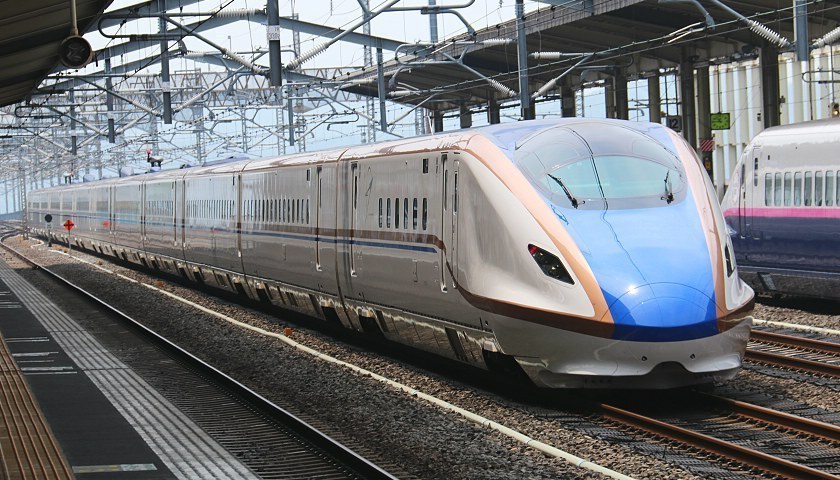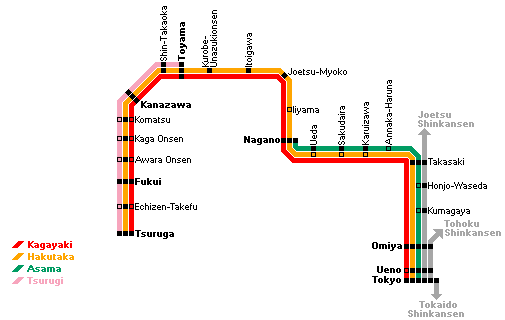Hokuriku Shinkansen

The Hokuriku Shinkansen (北陸新幹線) is a shinkansen line that connects Tokyo with Tsuruga in Fukui Prefecture. It is operated by the East Japan Railway Company, commonly known as JR East, and the West Japan Railway Company, commonly known as JR West.
The shinkansen line was opened as far as Nagano in 1997 in time for the Nagano Winter Olympics, extended to Kanazawa in 2015, and further extended to Tsuruga in 2024. Before its extension to Kanazawa, the line was popularly known as Nagano Shinkansen. The line is planned to be further extended to Kyoto and Osaka in the 2040s.

The Kagayaki is the fastest train category along the Hokuriku Shinkansen, operating only in the mornings, late afternoons and evenings. While some operate all the way between Tokyo and Tsuruga, others operate only between Tokyo and Kanazawa. The Kagayaki stops only at major stations and features twelve cars, one of which is Gran Class, the first class service by JR. The Kagayaki is one of the few shinkansen trains without non-reserved seating. A seat reservation is mandatory. When all seats are booked out, standing tickets can be purchased.

The Hakutaka is the slower of the two train categories that run along the entire length of the Hokuriku Shinkansen. It skips many stations between Tokyo and Nagano, but stops at most of the stations beyond Nagano. The Hakutaka features the same train sets as the Kagayaki, but it does offer non-reserved seating.

The Asama, named after the large active volcano on the border between Gunma Prefecture and Nagano Prefecture, runs just between Tokyo and Nagano.

Also named after a famous mountain, Tsurugi trains operate between Tsuruga and Toyama stations, although a few operate only between Tsuruga and Kanazawa. Stopping patterns vary by train, but a majority of trains stop at all stations.


Note: For simplification, some rare train compositions and stopping patterns are omitted.
Questions? Ask in our forum.